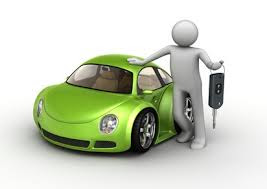Auto Insurance Options for Low-Income Drivers:
It’s illegal to drive without car insurance in all 50 states. You need coverage, then, if you want to drive anywhere in the United States. But what if you’re struggling with a low income and can’t afford auto insurance?
You might qualify for low-cost auto insurance sponsored by state governments. These programs are designed to provide drivers who meet certain income requirements auto insurance that meets a state’s legal minimums.
If you drive with state-sponsored low-cost auto insurance, then, you won’t be breaking the law as you travel its highways and side streets.
The problem? It’s not easy to find state-sponsored low-income auto insurance. As of the writing of this story, there were only three states that offered such programs, California, Hawaii and New Jersey.
Fortunately, even if your state doesn’t offer low-income auto insurance programs, you can take steps to reduce the cost of the coverage you are legally required to hold.
State-sponsored insurance programs
Other ways to reduce your insurance costs
Other ways to reduce your insurance costs
The California Low-Cost Automobile Insurance program -- better known as CLCA -- offers both liability and underinsured motorist coverage for low-income drivers. This coverage will meet the legally mandated coverage minimums imposed by the state of California.
Not everyone qualifies for this program, of course. Your annual income must be within 250 percent of the federal poverty limit, you must be at least 16 years old and you must own a car that is worth less than $25,000.
How much you pay for this program varies depending on your age, sex and the county in which you live. For instance, a male from the ages 19 to 24 who lives in California's Marin County will pay $417 a year for this coverage. A driver who lives in Sacramento County and is not a male from the ages of 19 to 24 will pay $321 each year for this insurance.
Hawaii's program is far more limited than is California's. Offered through the state's Assistance to the Aged, Blind and Disabled services program, Hawaii's low-income auto insurance program provides free coverage to people with disabilities who are at least 65 years old. Recipients must also have income levels that are below 34 percent of the federal poverty limit.
New Jersey's Special Automobile Insurance Policy is open to a much wider pool of drivers and will cover you legally if you are driving in the state. However, it doesn't provide much coverage.
The program only covers emergency medical costs if you are in an auto accident. The program's Web page says that the insurance also covers the treatment of serious brain and spinal cord injuries up to $250,000 and provides a death benefit of $10,000.
The policy doesn't cover damage drivers might cause to other persons or property. it also doesn't cover any money you'd need to spend to repair your own vehicle. In other words, there isn't a lot of protection with this program.
The coverage is inexpensive, though, costing drivers $365 a year. Eligibility is limited, though: Drivers must be enrolled in Federal Medicaid with Hospitalization. Drivers can apply for this coverage at private insurance agencies working throughout the state.
Drivers who pay for an entire year's worth of coverage are only required to pay $360 a year.
The lack of state-sponsored car insurance programs can be frustrating. But there are ways to save on auto insurance even if you don't live in a state that offers low-income policies.
Brian So, founder of Canadian insurance agency Brian So Insurance in Vancouver, British Columbia, recommends that consumers pay their insurance premiums monthly if they need financial relief.
Interest rates have been rising, but they are still quite low. This can make it more affordable to pay off your yearly car insurance bill in smaller bites, So said.
"If you're on a tight budget, you may not be able top ay the entire annual premium upfront," So said. "With interest rates still hovering near historical lows, you will be able to finance the premium monthly with low monthly payments."
You can also reduce your monthly or annual premiums by increasing your deductible, the amount you have to pay first following an accident before your insurance company pays out. If your deductible is $1,000, and you get into an accident causing $5,000 worth of damage, you pay the first $1,000 and your insurer will pay the remaining $4,000.
As So says, the higher your deductible, the lower your premiums, making paying for insurance over the long-term more affordable. Just be careful that your deductible isn't so high that if you do file a claim it won't bust your household budget.
"Increasing the deductible will hurt your wallet more if there is a claim," So said. "But at least you are not sacrificing a necessary coverage even with less expensive insurance."
You can also save on auto insurance by reducing the amount of coverage you take out on your vehicle. Your coverage will need to include liability, which covers damage to other people or property that you cause. States require this level of insurance.
Auto insurance policies also provide full comprehensive and collision coverage, which covers you for damages to your car. If your car is totaled in an accident, this insurance would help cover the costs of repairing or replacing it.
But if your car is old -- or if you are desperate to reduce your auto insurance premiums -- you can drop this coverage. If your car is damaged, you'll have to pay for repairs on your own. If it is completely destroyed, you'll have to cover the costs of buying a new car on your own, too. But dropping collision and comprehensive coverage will save you money on your premium and make it easier to buy the insurance you need to drive legally.


Post a Comment